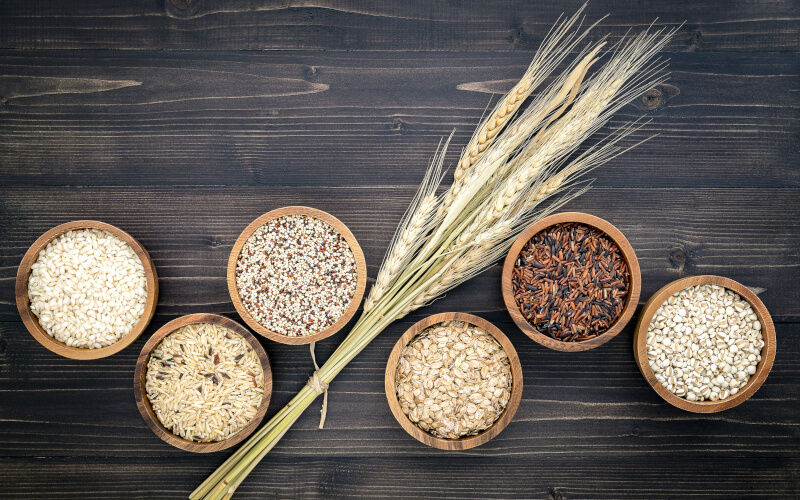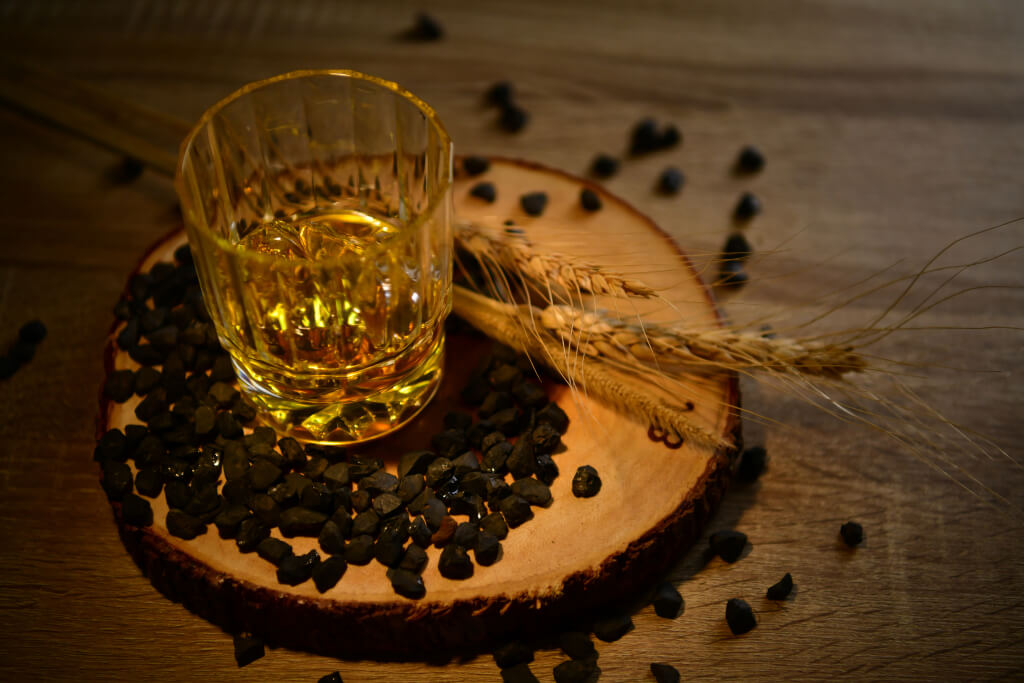As whisky enthusiasts, we can’t help but be enthralled by the practically limitless range of flavours and aromas available in our preferred bottles. But have we ever considered what gives these flavours their complexity? Today, we’ll look into the important role that barley, a raw grain utilised in the production of whisky, plays in determining the distinct flavour profiles that we love.
In This Case, Barley is a Critical Component
When it comes to the production of whisky, barley is much more than just another ingredient. It is both the spirit and the genetic code of the whisky, and it has the capacity to significantly modify the flavour profile. “Barley is the canvas on which we paint our flavours,” said Ian Millar, a former Glenfiddich Distillery manager. Barley comes in many different types, each with its own distinct flavour profile that might occasionally surprise the taster.
Various Types of Barley

Despite the prevalent belief that barley is a single type of grain, more than 20,000 unique types of barley have been reported around the world. Each of these categories has its own set of characteristics and qualities.
- Golden Promise is a Scottish variety that is known for maturing quickly. Since the 1960s, it has been a choice in distilleries. Golden Promise, which has a strong flavour and a lot of sugar, makes whisky taste rich, sweet, and like malt.
- Maris Otter is an English type that is often used in brewing. It is known for adding a sweet and slightly biscuity flavour to whisky, which gives it its own taste.
- Optic is a new type of barley that has become famous because of its high yield and resistance to disease. It has a light, fresh taste that draws attention to the good things about the spirit itself.
- The Concerto variety has become the standard in the business because it is reliable, can be used in many ways, and produces a lot. Since there is no taste input that can be traced, distillers have more freedom to make flavour profiles that go well with their goods.
- Sovereign:
Origin: This barley variety was bred in the UK and has since seen an uptick in its use for distilling purposes.
Characteristics: Sovereign is known for its consistency in yield and excellent malting attributes.
Impact on Whisky: This barley imparts a rounded and smooth character to whiskies. An example worth noting is a limited-edition single malt from a Scottish distillery that solely used Sovereign, and tasters often commented on its velvety mouthfeel. - Laureate:
Origin: A relatively new addition to the world of barley, Laureate was introduced as a successor to some of the older, more traditional varieties.
Characteristics: It’s particularly valued for its resistance to a variety of barley diseases, making it a reliable choice for farmers.
Impact on Whisky: While some distillers assert that Laureate provides a neutral base, others believe it imparts a delicate fruity nuance to the spirit. A distiller once shared a story of an experimental batch using Laureate, where tasters detected subtle hints of peach and apricot. - Belgravia:
Origin: Primarily grown in the northern regions of the UK, Belgravia is a spring barley variety.
Characteristics: Belgravia is known for its resilience in colder climates and its uniform germination, which is a crucial factor for maltsters.
Impact on Whisky: Whiskies made from Belgravia are often described as having a ‘clean’ profile, allowing for other ingredients or aging processes to shine. An anecdote from a master blender revealed that Belgravia-based malts are often his choice for blends requiring a neutral but solid foundation. - Chalice:
Origin: Another variety developed in the UK, Chalice has been around for a while but is not as widely recognized as some of its counterparts.
Characteristics: This barley stands out due to its high kernel weight, making it a favorite among maltsters.
Impact on Whisky: With a gentle maltiness and a hint of honeyed sweetness, whiskies made from Chalice have a distinct yet not overpowering profile. At a whisky-tasting event, a renowned critic once expressed his surprise upon learning that the honeyed dram he enjoyed was crafted from Chalice, underscoring its understated potential.
New Developments’ Flavour
A lot of distilleries are experimenting with barley to create unusual and flavorful whiskies, either by resurrecting extinct varieties or producing new ones. “We’re exploring the idea of terroir in whisky,” said Ned Gahan, master distiller at Waterford Distillery. “Part of that involves experimenting with different barley varieties.” We want to make a whisky that is true to its heritage, and because each has a distinct flavour character, these casks play a vital role in the process.
In Contrast to Aesthetic Considerations
Distilleries must consider the economic aspect in addition to the flavour aspect, which is critical. Higher-yielding cultivars are used to maximise whisky production, even though those kinds do not always give the most flavour. “While we’d love to explore more with flavor-rich, lower-yielding varieties, we must strike a balance between this goal and the economics of distilling,” said David Fitt, Master Distiller at English Whisky Co. The aim is to strike a balance between flavour and utility.
The Unseen Artisan, often known as the Maltster
Maltsters are critical behind-the-scenes players in the process of increasing flavour creation by changing the properties of barley. Their knowledge, together with the selection of different types of barley, has a significant impact on the flavour of the finished whisky.
During our conversation with Mike Palmer, a maltster at Simpsons Malt, he said, “Our role involves unlocking the flavour potential contained within each grain.” Working with different barley strains allows us to provide an exciting flavour spectrum for distillers to experiment with. After taking a step back and reviewing the most important arguments expressed in the discussion, it is plainly clear that the barley variety is critical in the production of whisky, acting as the foundation for its flavour, personality, and quality.
Without a doubt, the type of barley utilised is an important component to consider. Its significance goes far beyond its primary usage as a component in the production of whisky. Whisky is manufactured from a variety of barley varietals, each of which offers a specific attribute (such as a flavour, aroma, or texture) that helps identify the spirit. The distillers use barley as their “primary colour palette,” from which they create a vast range of whisky flavours that span the flavour spectrum.
Furthermore, the type of barley used influences the fermentation process, which influences the amount and quality of alcohol produced. Some barley cultivars are chosen for their high yield, which ensures production efficiency. Other barley varieties are valued for their disease resistance or tolerance to environmental conditions, both of which are important considerations for efficient development and harvesting.
The type of barley used is an important factor in the discovery and development of new whisky recipes that is now taking place in the industry. Whisky distilleries that are researching the impact of terroir in the formation of the spirit understand that barley variety is an important variable. New whisky expressions, made possible by the discovery and exploitation of different whiskies, have expanded the range of flavours that may be reliably identified.
Therefore, economically and aesthetically, the type of barley used in whisky manufacture is crucial. It’s a fascinating subject that deepens our familiarity with and appreciation for whisky by shedding light on previously unknown aspects of the spirit’s complex and delicious flavour profiles.

